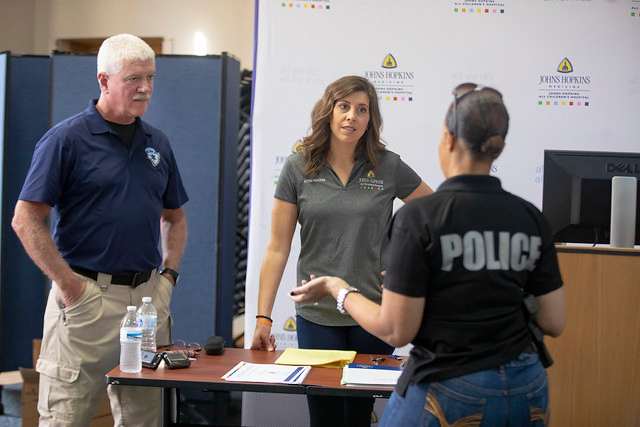Innovate
Johns Hopkins All Children’s simulation center helps police get insight into autism

Law enforcement officers from throughout Florida have packed the first few sessions of a new training program at Johns Hopkins All Children’s Hospital, teaching them how to respond to calls involving people with autism spectrum disorder.
The program combines interactive instruction on recognizing the signs and symptoms of ASD with an opportunity to take part in simulated scenarios to practice newly learned behavioral skills.
While there are similar autism instructional programs, the St. Petersburg hospital is the only one in the nation to use simulation.
John Hopkins All Children’s has the largest pediatric simulation center in Florida. Recently named the Walmart and Sam’s Club Simulation Center, to recognize $1.2 million in donations from the stores’ associates, it’s 13,000 square feet with 15 simulations rooms. Medical personnel use the center to practice scenarios that could lead to errors, but it’s a community tool as well, said Lauren Gardner, administrative director of the Autism Program at Johns Hopkins All Children’s Hospital.
“We have an awesome opportunity with the center to provide training that’s unique and innovative and provides a safe place to learn and debrief and talk through decision-making process,” Gardner said.
There’s a growing need for the program. One out of 59 8-year-olds have been diagnosed with autism. In 2000, when health care providers started talking about autism as an epidemic, the rate was one in 150 children. The increase is due to better diagnostic tools as well as an actual increase in cases due to genetic and environmental factors, and the recognition that autism includes a spectrum of disorders.
A Florida law that took effect in September 2017 requires police departments to provide autism identification and response training. It was passed several months after a home therapist caring for a man with autism was shot by a police officer in Miami. The shooting was captured on video and received national attention.
“Following the shooting in Miami and just the need in the community for growing awareness of ASD, we decided to put together a training for local first responders,” Gardner said. “We’ve been focusing on law enforcement agents first but the goal is over time to advance to first responders as far as firefighters, EMTs and educators.”
The Cigna Foundation funded the program through a $95,000 grant.
The hospital offers the program once every other month and can accommodate 75 to 100 people at the morning session, where there’s a lot of interactive learning.
“We use a lot of videos and there’s a lot of think-pair-share breakdowns where we talk about how they would approach a situation, how do they recognize core features of autism, because it’s a spectrum. Individuals with autism do present differently, but there are some core characteristics that we want them to be aware of. And we want them to adapt their behavior based on recognition of the fact that a person may have autism, so that it’s more successful for themselves and also the individual with autism,” Gardner said.
The afternoon session in the simulation center is limited to 12 people, who take part in three scenarios that replicate calls police officers are likely to receive.
“One is a classroom setting where an individual has become aggressive. One is a home setting where an individual with autism has had a behavioral outburst and hit a parent,” Gardner said. “Another is a mall scenario where there’s an individual in a mall who is behaving in a way that other people might not think of as typical, so the police are called. Then how do you determine what to do with an individual who is not able to communicate effectively and tell you who they are, where they are from, who their caregivers are.”
Johns Hopkins All Children’s initially worked with St. Petersburg police on the program. Since then, 14 law enforcement agencies statewide have signed up to attend.
“We’ve also had requests to go other places and train departments at their home location outside of the hospital. That indicates to me that what we’re doing is something that people highly value,” Gardner said. “I have a strong interest in trying to use virtual reality as part of the program. That would help us give perspective and the point of a view of a person with autism, and also do simulation training for persons who can’t come here. That would be a way we could take this on the road as well.”
Upcoming sessions at the St. Pete hospital are set for July 26, Sept. 20 and Nov. 8. Registration is here.








1 Comment